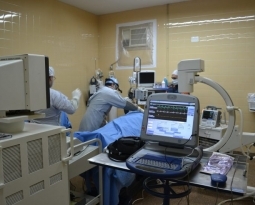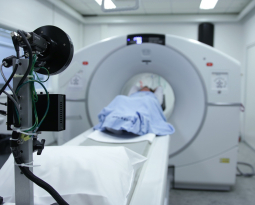Idaho Patent of the Month – September 2023
American Semiconductor, Inc., an industry leader in thin chip packaging, has introduced a method of demounting thin semiconductor devices that promises to reshape the way we handle and process these ultra-thin semiconductor wafers.
As semiconductor technology advances, the demand for ultra-thin wafers has grown significantly. These wafers, often less than 20 micrometers thick, present unique challenges. They are extremely fragile and flexible, making traditional handling and processing methods inadequate.
American Semiconductor’s method is designed to provide support during the thinning process and facilitates subsequent processing, including singulation and packaging of individual dice. The process begins by bonding the ultra-thin semiconductor wafer with a temporary adhesive to a carrier substrate. This bonding provides stability during the thinning process, ensuring that the wafer remains intact. The wafer is then thinned to the desired thickness while attached to the carrier substrate. This step is crucial in achieving the flexibility needed for further processing. Unlike traditional methods that require removing the carrier substrate before addressing the temporary adhesive, this method leverages the wafer’s newfound flexibility. It gently peels the ultra-thin wafer from the temporary adhesive without the need for carrier substrate removal.
What sets this method apart is its chemical-free release process. It eliminates the need for laser release processing, thermal adhesive release, or chemical adhesive removal. This not only streamlines the process but also reduces potential damage to the wafer.
The innovative method acknowledges the flexible nature of the ultra-thin wafer. It can leave the wafer oriented with its frontside either up or down, offering greater versatility in handling and processing.
Are you developing new technology for an existing application? Did you know your development work could be eligible for the R&D Tax Credit and you can receive up to 14% back on your expenses? Even if your development isn’t successful your work may still qualify for R&D credits (i.e. you don’t need to have a patent to qualify). To find out more, please contact a Swanson Reed R&D Specialist today or check out our free online eligibility test.
Who We Are:
Swanson Reed is one of the U.S.’ largest Specialist R&D tax advisory firms. We manage all facets of the R&D tax credit program, from claim preparation and audit compliance to claim disputes.
Swanson Reed regularly hosts free webinars and provides free IRS CE and CPE credits for CPAs. For more information please visit us at www.swansonreed.com/webinars or contact your usual Swanson Reed representative.

















